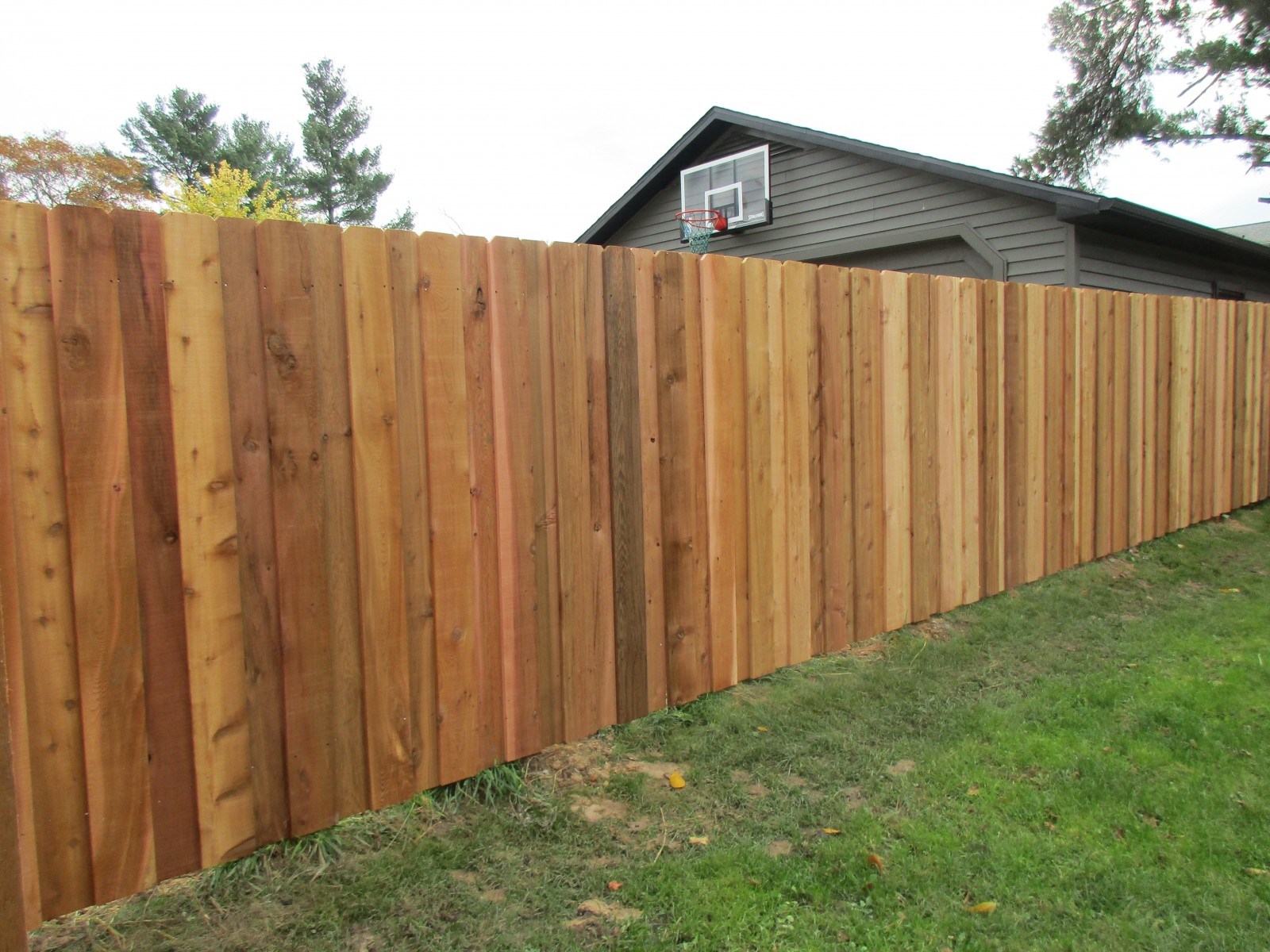When it comes to choosing the perfect fencing option for your property, there are numerous factors to consider. Two popular choices that often come up in the debate are chain link fences and wood fences. Both options have their own unique features and benefits, making them suitable for different situations. In this article, we will delve into the comparison between chain link fences and wood fences, exploring their strengths and weaknesses to help you determine which is the superior choice for your specific needs.
Wood Fence
Chain link fences are known for their durability and versatility. Made of interlocking steel wires, they offer a robust and secure barrier for a wide range of applications. Whether you’re looking to enclose a backyard, protect a commercial property, or set boundaries for a sports field, a chain link fence can provide a reliable solution. Its open design allows for visibility, making it ideal for areas where maintaining a clear line of sight is important. Additionally, chain link fences are low-maintenance and can withstand harsh weather conditions, making them a cost-effective option in the long run.
On the other hand, wood fences exude a classic and timeless appeal. They can complement various architectural styles and can be customized to match your desired aesthetic. Wood fences offer excellent privacy, effectively shielding your property from prying eyes and creating a cozy and secure atmosphere. They can also help to reduce noise and act as a windbreak, making them a popular choice for residential areas. However, compared to chain link fences, wood fences require more maintenance, as they are susceptible to rot, warping, and pests. Regular staining or sealing is necessary to uphold their appearance and durability.
By examining the unique characteristics of each fencing option, we can begin to weigh the pros and cons of chain link fences and wood fences. Consider your specific needs, budget, desired aesthetic, and long-term maintenance capabilities to determine which option would be the superior choice for your fencing battle.
###Durability and Maintenance
When it comes to durability and maintenance, both chain link fences and wood fences have their pros and cons.
Chain link fences are known for their durability, as they are made of galvanized steel that can withstand harsh weather conditions and resist rust. They are also low-maintenance, requiring minimal upkeep over time. However, over the years, the metal may start to show signs of wear and tear, such as rust or discoloration, which may need to be addressed to maintain the fence’s appearance and functionality.
Wood fences, on the other hand, offer a classic and natural look. They can be made from various types of wood, such as cedar or pine, which can provide different levels of durability. Regular maintenance, such as staining or painting, is necessary to protect the wood from moisture, pests, and rot. Without proper maintenance, wood fences may experience warping, splitting, or decay, which could shorten their lifespan.
Ultimately, the durability and maintenance of both chain link fences and wood fences depend on various factors, including the quality of materials used and the level of care provided. Therefore, it is essential to consider your specific needs and preferences when deciding between the two options.
Aesthetics and Privacy
When it comes to the aesthetics of your fencing choice, both the chain link fence and the wood fence offer their own unique appeal.
Starting with the chain link fence, it provides a more industrial and modern look to your property. Its open design allows for visibility, making it perfect for those who want to showcase their landscaping or have a clear view of their surroundings. However, if privacy is a top priority for you, the chain link fence may not be the best option, as it doesn’t offer much in terms of blocking the view from outside.
On the other hand, the wood fence exudes a classic and traditional charm. Its natural beauty blends seamlessly with various architectural styles, making it a popular choice for many homeowners. Besides its timeless aesthetic appeal, the wood fence also offers better privacy compared to the chain link fence. Its solid panels provide a barrier that can keep prying eyes at bay, allowing you to enjoy your outdoor space without feeling exposed.
Ultimately, the decision between a chain link fence and a wood fence boils down to your personal preference for aesthetics and the level of privacy you desire. So, take some time to consider the overall look you want to achieve and the importance of privacy in your fencing choice.
3. Cost and Installation
When it comes to cost, both chain link fences and wood fences have their differences. Chain link fences generally tend to be more cost-effective compared to wood fences. The materials used for chain link fences are usually more affordable, making them a more budget-friendly option. Additionally, chain link fences require less maintenance, which can save you money in the long run.
On the other hand, wood fences may initially require a higher investment. The cost of materials for wood fences can be higher, especially if you opt for high-quality wood. However, wood fences offer a timeless and classic aesthetic appeal that many homeowners find desirable. Moreover, wood fences provide more privacy and security compared to chain link fences.
For installation, chain link fences are relatively easier and quicker to install compared to wood fences. Chain link fences involve erecting metal posts and attaching the chain link fabric, which can be done efficiently. In contrast, wood fences require more labor-intensive installation processes, such as digging holes for the posts, leveling, and accurately aligning the wooden panels or boards.
Despite the differences in cost and installation, both chain link fences and wood fences offer their unique advantages and factors to consider based on your specific needs and preferences.






